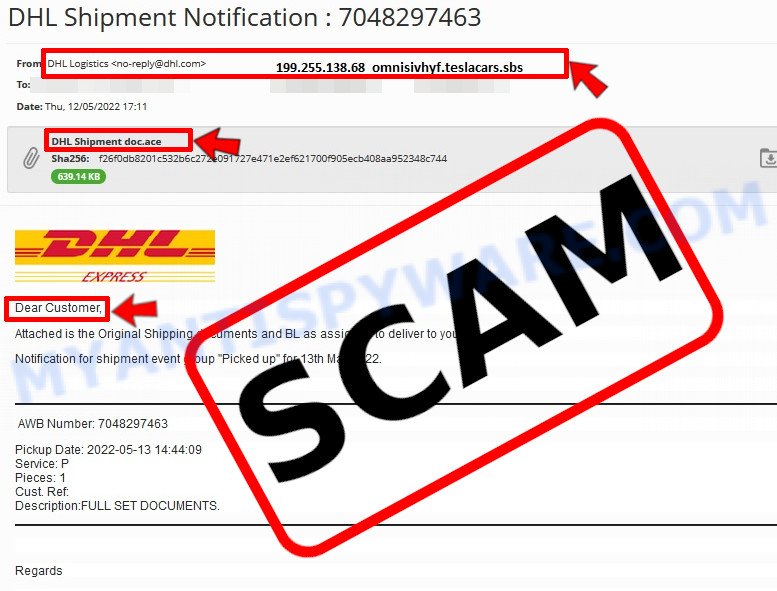The Myantispyware team wants to bring your attention to a dangerous scam targeting business email users. This scam arrives in the form of an email with a subject line like “Action Needed: Mail Server token update required for Business Email”. The email claims that your security token is outdated and needs updating to avoid automatic mail reset.
A typical “Security Token For Business Email Is Outdated” scam email reads as follows:
Subject: Action Needed: Mail Server token update required for Business Email
Body:
Security token for business email xxxxxxx is outdated
This affects the performance of your mail outlook and MX-Host.
You are required to update the security token for ******** or risk automatic mail reset of your mailbox. An automatic reset would delete the email user ******** from the mail servers.
To avoid resetting, kindly update your mail security token
Affected User: xxxxxxx
UPDATE SECURITY TOKEN UPDATE SERVERS
Issues found in the application completion system will no longer be investigated or corrected.
Unsubscribe From This List | Manage Email Preferences
This scam is a phishing attempt, where the email directs you to a fake website, featurers1.click, disguised as an email sign-in page. The goal is to steal your personal information or login details by tricking you into thinking it’s a legitimate task.
If you receive an email like this, do not click on any links or provide any information. Instead, delete the email immediately to keep your information safe. 💡 If you suspect that your email has been compromised or if you have clicked on such links, follow the recommended steps to secure your email account as soon as possible.
📧 What to Do When You Receive the “Security Token For Business Email Is Outdated” Scam Email
We advise everyone who receives this email to follow the simple steps below to protect yourself from potential scams:
- ❌ Do not believe this email.
- 🔒 NEVER share your personal information and login credentials.
- 📎 Do not open unverified email attachments.
- 🚫 If there’s a link in the scam email, do not click it.
- 🔍 Do not enter your login credentials before examining the URL.
- 📣 Report the scam email to the FTC at www.ftc.gov.
If you accidentally click a phishing link or button in the “” Email, suspect that your computer is infected with malware, or simply want to scan your computer for threats, use one of the free malware removal tools. Additionally, consider taking the following steps:
- 🔑 Change your passwords: Update passwords for your email, banking, and other important accounts.
- 🛡️ Enable two-factor authentication (2FA): Add an extra layer of security to your accounts.
- 📞 Contact your financial institutions: Inform them of any suspicious activity.
- 🔄 Monitor your accounts: Keep an eye on your bank statements and credit reports for any unusual activity.
🔍 How to Spot a Phishing Email
Phishing emails often share common characteristics; they are designed to trick victims into clicking on a phishing link or opening a malicious attachment. By recognizing these signs, you can detect phishing emails and prevent identity theft:

💡 Here Are Some Ways to Recognize a Phishing Email
- ✉️ Inconsistencies in Email Addresses: The most obvious way to spot a scam email is by finding inconsistencies in email addresses and domain names. If the email claims to be from a reputable company, like Amazon or PayPal, but is sent from a public email domain such as “gmail.com”, it’s probably a scam.
- 🔠 Misspelled Domain Names: Look carefully for any subtle misspellings in the domain name, such as “arnazon.com” where the “m” is replaced by “rn,” or “paypa1.com,” where the “l” is replaced by “1.” These are common tricks used by scammers.
- 👋 Generic Greetings: If the email starts with a generic “Dear Customer”, “Dear Sir”, or “Dear Madam”, it may not be from your actual shopping site or bank.
- 🔗 Suspicious Links: If you suspect an email may be a scam, do not click on any links. Instead, hover over the link without clicking to see the actual URL in a small popup. This works for both image links and text links.
- 📎 Unexpected Attachments: Email attachments should always be verified before opening. Scan any attachments for viruses, especially if they have unfamiliar extensions or are commonly associated with malware (e.g., .zip, .exe, .scr).
- ⏰ Sense of Urgency: Creating a false sense of urgency is a common tactic in phishing emails. Be wary of emails that claim you must act immediately by calling, opening an attachment, or clicking a link.
- 📝 Spelling and Grammar Errors: Many phishing emails contain spelling mistakes or grammatical errors. Professional companies usually proofread their communications carefully.
- 🔒 Requests for Sensitive Information: Legitimate organizations typically do not ask for sensitive information (like passwords or Social Security numbers) via email.
✅ Conclusion
We hope this article has helped you understand more about the “Security Token For Business Email Is Outdated” Scam Email and how to avoid falling victim to scammers. If you have received a phishing email that is similar but not identical to the example above, please post it in the comments section of this article. This helps us warn other users about potential scams and improve our resources to protect you better. Stay safe and vigilant! 🛡️
















